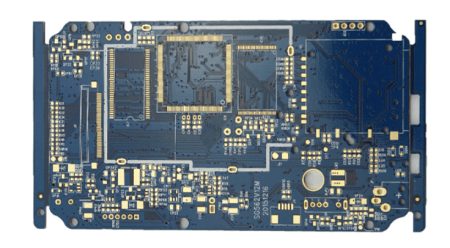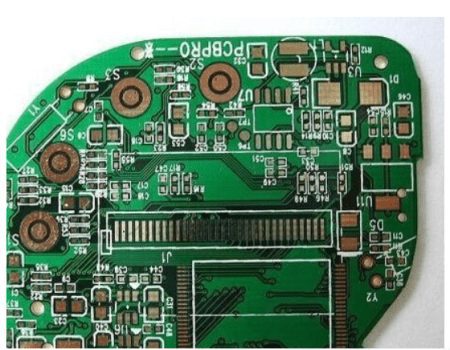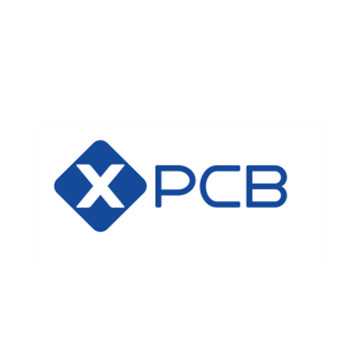- +86-755-23012705
- Building 3, Jinfeng Industrial Park, Fuyong Street, Baoan District, Shenzhen ,China
- [email protected]
As environmental concerns continue to grow globally, industries across the board are increasingly focused on reducing their ecological footprint. The electronics industry is no exception, and Printed Circuit Board Assembly (PCBA) plays a pivotal role in this shift. PCBA, which is the process of mounting electronic components onto a printed circuit board, is central to the functionality of nearly all modern electronics. With stricter environmental regulations and growing consumer demand for sustainable products, environmental certification has become an important factor that influences both the design and manufacturing of PCBAs.
In this blog, we’ll explore how environmental certification affects PCBA design and manufacturing processes, the standards that drive these changes, and how companies are responding to the growing need for eco-friendly electronics.
Environmental certification refers to third-party recognition that a product, process, or company meets specific environmental standards and criteria. For PCBAs, these certifications are often related to the use of non-toxic materials, energy-efficient production processes, and the reduction of hazardous substances in the design and manufacturing phases.
Some of the most recognized environmental certifications for electronics include:
RoHS (Restriction of Hazardous Substances): This certification restricts the use of certain hazardous materials, such as lead, mercury, cadmium, and brominated flame retardants, in electronic products and their components.
WEEE (Waste Electrical and Electronic Equipment): This regulation ensures that electronic products are designed for easier recycling and reduced environmental impact once they reach the end of their life cycle.
ISO 14001: An international standard for environmental management systems, ensuring that a company has effective practices in place to minimize its environmental impact.
UL ECV (Environmental Claim Validation): This certification validates environmental claims such as energy efficiency or the use of environmentally friendly materials.
These certifications often require rigorous testing and documentation, with manufacturers needing to ensure their PCBAs comply with the standards set by regulatory bodies.

Environmental certifications have a significant influence on how PCBAs are designed. When a company strives to meet environmental standards, the design process must prioritize sustainability while still ensuring that the final product functions effectively. Here’s how:
One of the primary ways environmental certifications affect PCBA design is through the choice of materials. RoHS, for example, prohibits the use of toxic substances like lead and mercury in electronic components. Designers must find alternative, safer materials that meet the same performance standards. Lead-free solder, made from a mixture of tin, silver, and copper (SAC alloys), is commonly used in PCBA design to comply with RoHS. This transition to lead-free solder can sometimes affect the performance or durability of components, so manufacturers need to carefully balance environmental goals with reliability.
Another key material consideration is the use of halogen-free materials. Certain flame retardants, commonly used in PCBs, contain halogens such as bromine or chlorine, which can be harmful to the environment when they are disposed of. To meet environmental standards, many manufacturers are opting for halogen-free PCBs, which use safer alternatives that do not release toxic gases when burned or recycled.
Environmental certifications like WEEE encourage designers to create products that are easier to disassemble and recycle. This can include minimizing the use of multi-layer PCBs, reducing the number of different materials used in a single product, and ensuring that components can be easily removed or reused. For instance, designers may choose to use standardized components that can be recycled in bulk, thus reducing the complexity and cost of recycling at the product’s end of life.
Environmental certification also requires designers to consider how energy-efficient their PCBAs are. For example, energy-efficient designs may involve reducing the number of components on the board, optimizing power consumption, or using lower-voltage components. Designers may also need to work closely with component suppliers to ensure that all parts of the assembly comply with energy efficiency standards, further reducing the overall environmental footprint of the product.
While the design phase is where most of the environmental impact is determined, the manufacturing process plays a critical role in ensuring compliance with environmental certifications. Here are several key ways that these certifications affect PCBA production:
Manufacturers are increasingly focused on reducing waste throughout the PCBA production process. Environmental certifications like ISO 14001 require companies to implement waste management practices that minimize both industrial waste and e-waste. PCBAs are often produced using a variety of chemicals, many of which are hazardous if not disposed of properly. To comply with these certifications, manufacturers have adopted stricter waste disposal protocols, such as recycling solvents, reusing chemicals, and reducing waste through more efficient manufacturing practices.
Manufacturing PCBAs involves processes like soldering, assembly, and testing, all of which require significant amounts of energy. As part of their commitment to environmental certification, many manufacturers are investing in energy-efficient technologies to reduce their overall energy consumption. This can include upgrading to energy-efficient equipment, implementing energy-saving practices, and utilizing renewable energy sources like solar or wind power in the production facilities. These changes help reduce the carbon footprint of the production process and make the end product more sustainable.
To achieve and maintain certifications like RoHS, WEEE, and ISO 14001, manufacturers must undergo regular audits and compliance checks. These audits assess everything from raw material sourcing to manufacturing processes, ensuring that all parts of the PCBA production meet strict environmental guidelines. Regular internal and external audits help ensure that companies stay on track with their sustainability goals and that their environmental claims are verified.
Another aspect of environmental certification is the packaging used for PCBAs. To meet WEEE and other regulations, manufacturers often need to adopt more sustainable packaging materials. This may include using recyclable or biodegradable materials, reducing the use of plastic, or even eliminating excess packaging altogether. These packaging changes are part of a broader movement toward sustainable product design and manufacturing.

While the push toward eco-friendly PCBAs is gaining momentum, achieving and maintaining environmental certification can be challenging. For manufacturers, meeting the rigorous requirements of certifications like RoHS and ISO 14001 can be resource-intensive and time-consuming.
One of the primary challenges is cost. Switching to eco-friendly materials, implementing energy-efficient practices, and ensuring compliance with environmental standards often require significant investments. For example, using lead-free solder and halogen-free materials may increase material costs, and implementing waste reduction programs may require new equipment or facilities. Manufacturers must weigh these costs against the benefits of certification, including market differentiation and customer demand for sustainable products.
Another challenge is supply chain complexity. Not all suppliers may be able to meet environmental standards, and manufacturers need to ensure that every part of their supply chain adheres to the same eco-friendly principles. This requires increased communication and collaboration with suppliers to ensure that all components, materials, and processes comply with environmental regulations.
Environmental certification is having a profound impact on the design and manufacturing of PCBAs. With increasing pressure from regulatory bodies and consumers for sustainable practices, companies are adopting more environmentally friendly materials, energy-efficient production techniques, and waste reduction strategies. While there are challenges in meeting these requirements, the long-term benefits—such as improved brand reputation, reduced environmental impact, and compliance with global regulations—make it a worthwhile investment. As the demand for sustainable electronics continues to grow, the role of environmental certification in shaping the future of PCBA design and manufacturing will only become more critical.

Take Your Projects to New Heights with XPCB Limited
XPCB Limited offers top-notch PCB manufacturing, quick-turnaround prototyping, and turnkey PCBA services designed to make your projects shine. Count on us to bring your ideas to life with efficiency and quality. Your success matters to us, and we’re here to make your innovation journey smooth and rewarding.






XPCB Limited is a premium PCB & PCBA manufacturer based in China.
We specialize in multilayer flexible circuits, rigid-flex PCB, HDI PCB, and Rogers PCB.
Quick-turn PCB prototyping is our specialty. Demanding project is our advantage.
Tel : +86-136-3163-3671
Fax : +86-755-2301 2705
Email : [email protected]
© 2024 - XPCB Limited All Right Reserve
